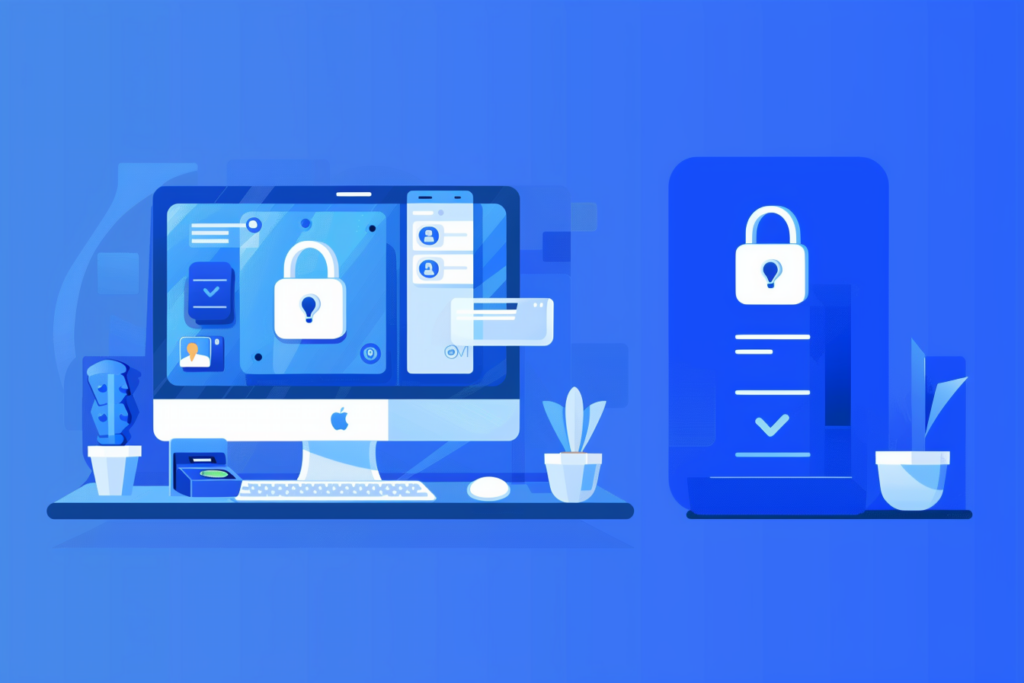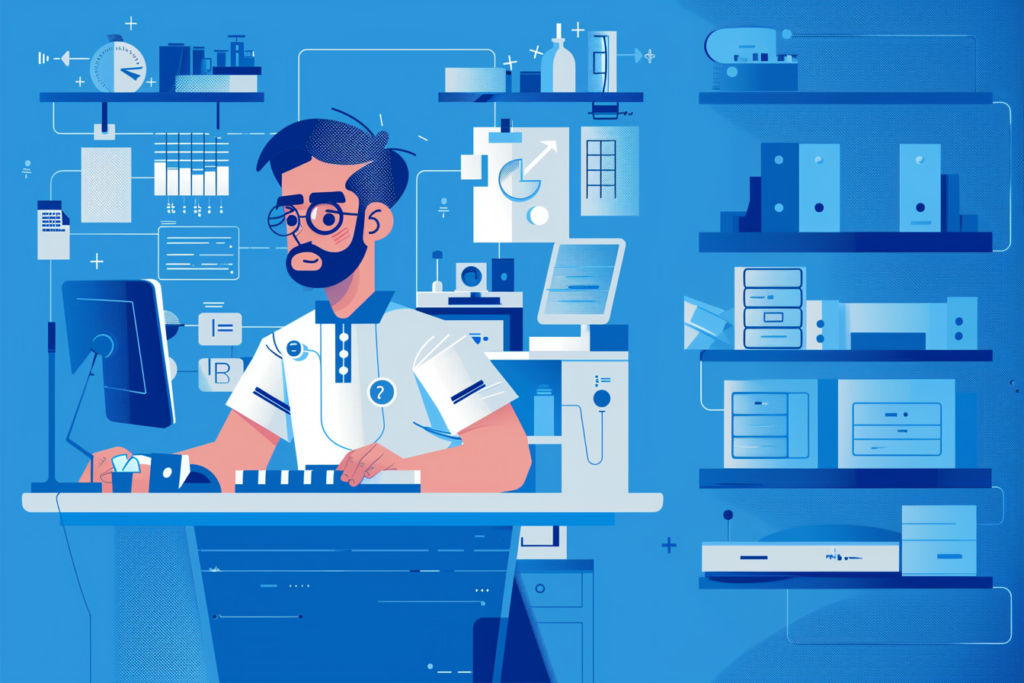First and foremost, we must understand why application development security is of great importance these days. The explanation is quite simple: corporate entities, small and big organizations, enterprise companies, and governmental organizations are embracing computer systems. Cybersecurity has emerged as a consequence, and the objective is to safeguard databases from hackers and numerous unauthorized threats. This requires businesses to look for development teams proficient with safeguarding technologies. Such teams are constantly investigating the application security market and the security trends that work.
In this article, we share the best practices for software development in 2025. They are a must-have for those developing reliable and trustworthy applications. Whether you are a developer, an investor, or a business, this is information you need to know.
Poor Software Engineering Security: Risks and Consequences
Poor security in software development exposes businesses to significant risks and harsh consequences. Some of the major ones are listed below:
- Reputational damage: Cybercrime affects finances and the reputation of a business. It leads to a loss of trust that is challenging to regain due to post-effects and negative media coverage.
- Data breaches: Hackers steal a lot of sensitive data, which results in harsh consequences for corporations and their clients. Data breaches lead to severe financial losses.
- Regulatory issues: If an organization ignores cloud application security issues, it can lead to legal problems and fines for most industries. For instance, GDPR and other regulations require strict data protection. Non-compliance automatically triggers severe consequences.
- Anxiety and stress: Ongoing application security challenges and inadequate practices create a stressful ecosystem where employees worry about security breaches, which affect their well-being and productivity.
- Unauthorized/Unwanted access: This is a typical step of poor application security technologies. Lack of proper security education, misconfigurations, and a poor coding attitude also contribute to unwanted entries.
- Vulnerabilities: In mobile app and web development, it’s critical to constantly update software to prevent attackers from exploiting the system’s weaknesses and stealing data.
Understanding these risks in software data security is the first step. But then, it’s critical to understand the factors contributing to poor software engineering, making software even more vulnerable.

What Contributes to 2025 Software Security Issues
Businesses have seen plenty of opportunities in cloud adoption, Artificial Intelligence, Machine Learning, and the evolution of the Internet of Things. But so have the criminals. These technological and societal evolutions bring opportunities as well as issues in software development and cybersecurity:
- AI advancements
- The number and cost of cyber breaches
- Cloud and IoT adoption
- Ransomware evolution
- Remote work
- Insider threats
- Lack of talent in cybersecurity
Let’s focus on the details.
AI Advancements
AI is not new — it has been around for quite some time already. However, recent advancements have made it a useful tool for cybersecurity experts and hackers. For instance, hackers use AI in phishing attacks, vulnerability searches, and evading detection.
The Number and Cost of Cyber Breaches
In 2025, the average price for data breaches across the US reached 9.5 billion USD. This number has increased in each of the past eleven years, and, according to Statista, between 2023 and 2028, this number will grow by 69% and reach almost 14 billion USD by the end of 2028.
Innovation is taking over the world, which means that the number of cyberattacks will keep growing immensely and becoming even more sophisticated. However, the secure software development cycle keeps advancing and creating sophisticated mechanisms against any threats and issues.
A valid reason for these assumptions is the rise of GenAI, an AI capable of generating new texts, videos, and images by recognizing patterns and making predictions. GenAI itself poses plenty of different challenges, including risks in privacy and data storage, the use of powerful cyberattacks, and growing digital vulnerabilities.
Cloud and IoT Adoption
Cloud migration and mass adoption of the Internet of Things are major considerations for better security in software engineering. Owners of legacy systems have noticed the following: If their product isn’t fully in the cloud, they don’t have benefits such as fast time to market, cost reduction, or convenience of use.
However, cloud-based applications are prone to software security threats, such as migration challenges, reduced control and visibility, incomplete data deletion, compliance challenges, and cloud-specific vulnerabilities.
Ransomware Evolution
Was there a time when ransomware wasn’t a threat? It is still in 2025 and is expected to become even more sophisticated, allowing criminals to apply their diverse tactics to use 0-day vulnerabilities.
Lately, RaaS platforms (Ransomware-as-a-service) have appeared, and double extortion strategies, polymorphic malware, and other sophisticated techniques have been adopted to target customers and organizations.
Remote Work
This factor usually surprises most people. However, since remote/hybrid forms of work became the norm in 2020, employees are exploiting personal hardware for work. What is its use for hackers?
They are developing new strategies to use personal devices to penetrate sensitive corporate data. To avoid this, businesses should offer compulsory tutorials and educational courses and enforce strict security policies.
Insider Threats
The latest Insider Threat Report by Cybersecurity Insiders states that in 2023, over 50% of all organizations experienced insider threats. It is peculiar that 8% of them witnessed over 20 incidents throughout the year.
To avoid this, the best secure software development practices should include threat detection capabilities, awareness, and employee training. This is especially recommended for cloud-based businesses since insider attacks are more frequent in the cloud.
Lack of Talent in Cybersecurity
The lack of proper application security technology is not the only issue. Even with proper technology on board, the IT industry is facing a cybersecurity workforce shortage. The latest shortage reached 4 million over a single year.
This means that most companies are struggling to immediately oppose threats, build a comprehensive security strategy, or consider how to protect their data, finances, and name in the long run.

2025 Software Development and Security Trends
Now, it’s time to talk about the development trends of 2025. We have chosen the ones that are on the rise and promise to preserve their highest positions in the first half of 2025:
- Automated testing
- Shift left security
- Microservices architecture
- Container security
- Zero trust architecture
- Intelligence sharing
- DevSecOps integration
- API security
- AI and ML in security
Interestingly, none of these trends can exist in isolation. Even though some are more powerful than others, it’s their perfect combination that works across software sizes, types, and domains. So, what are they all about? Let’s dive in and see.
Automated Testing
Security testing automation has quickly become a new and worthy trend. This strategy helps to identify system vulnerabilities faster and more efficiently, which is especially important for quick scalability. Today, diverse automated scanning tools and instruments work alongside static analysis. This application security trend makes it easier for developers to identify code issues regardless of the development stage.
Shift Left Security
The shift left approach also touches upon the testing domain and advocates starting security testing as early as possible, unlike traditional testing, which takes place later in the development cycle. When testing is integrated from the very start, software engineers find flaws faster and earlier, reducing the likelihood of security issues in the future.
Microservices Architecture
Why microservices architecture? This approach allows a software application to be broken down into independently deployable services. This new software development security standard allows a development team to create a flexible, scalable, and well-protected system for diverse security challenges. In the future, each microservice will have to validate every other service it interacts with, thus ensuring a secure and resilient ecosystem.
Container Security
It’s crucial today to make sure containers used for application handling (Kubernetes, Docker, etc.) are safe because more and more people keep using them. Popular container environments have default security measures, but they aren’t enough. Special instruments are making it possible to quickly check if container images have any weak points and vulnerabilities: Grype, Anchore Engine, Clair, Trivy, etc. Open-source tools are widely adopted. They are more transparent, cost-effective, and can be customized.
Zero-Trust Architecture
According to this architecture model, no trust is granted by default. This is the rule even for internal networks. This year is marked by a vast spread of the zero-trust architecture model. This popularity was triggered by the growing number of highly sophisticated threats and the fact that traditional security models (perimeter-based ones) are no longer applicable. At the same time, a zero-trust approach offers robust security solutions and requires ongoing trust validation. Today, it’s one of the highest proofs of security in the software development lifecycle.
Intelligence Sharing
In 2025, industries and organizations will share news and data about potential and past threats. This will build a network where everyone is informed enough to reinforce their deficiencies against new and known enemies. In the future, digital platforms are expected to be able to share this data automatically, allowing organizations to receive updates in real time and quickly respond to threats and challenges.
DevSecOps Integration
This is a smart combination of the DevOps pipeline and secure software development standards. What does this approach mean? It stands for a collaboration between three teams:
- Development team
- Security team
- Operations team
This approach allows making security a central part of the development process. The key tasks for DevSecOps are to use automated tests, keep an eye on security, and quickly handle issues that pop up.
API Security
API security will become more enhanced in 2025. How so? The Application Programming Interface presents a huge security risk because it provides a gateway through which hackers access control over sensitive data. But this year, more and more organizations are turning to APIs, making sure their security is of the greatest importance. This triggers the implementation of profound authorization and authentication mechanisms, data encryption, and more frequent testing.
AI and ML in Security
The development of Machine Learning and Artificial Intelligence gives developers more chances to create more sophisticated and protected software. These new technologies can automate incident response and enhance threat detection. Soon, AI-based instruments will be integrated to analyze large datasets to see patterns, anomalies, and potential risks. After implementing AI instruments into an existing system, security teams will be able to detect threats faster and make well-informed decisions.
Summing Up
Cybersecurity in software development is being reinforced. Trends and best practices from the past are merging to create new, more sophisticated, and trustworthy approaches that protect systems, data, businesses, and users. No wonder developers, investors, and businesses are looking for sources of information and trying to keep in step with the times.
Years ago, it was all about the development cost and timelines. Now, it’s about costs, timelines, and security. At LITSLINK, we’re very familiar with all three points: We’ll help with the calculations, planning, and best security practices that guarantee peace of mind and soul 24/7. Fill in the contact form and let us know what bothers you. We’re ready to help in full force.





